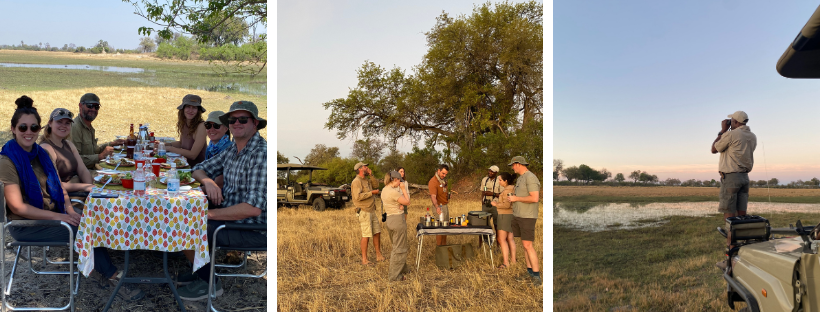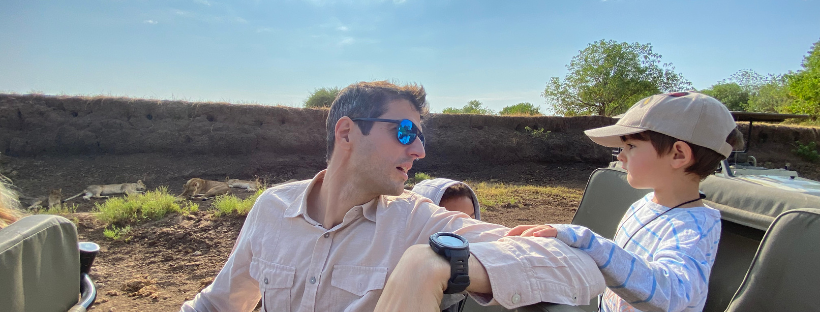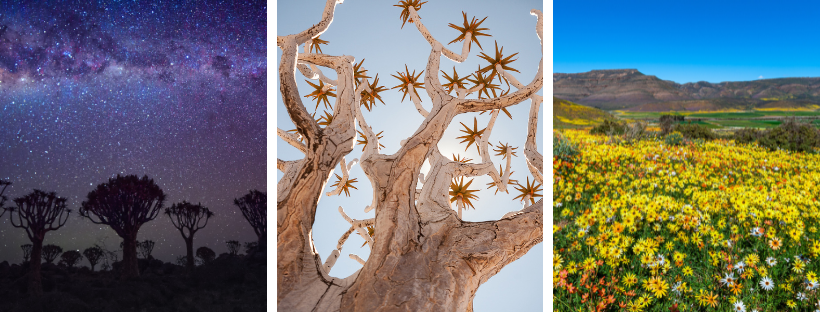From Okavango Delta’s Splendor to Hwange’s Untamed Beauty
I recently had the privilege of visiting Beagle Expeditions, a luxury mobile tented camp in Botswana’s Okavango Delta. The area is so wild and untouched that the only way to get in and out is by helicopter. What an experience that is!
What I loved most about Beagle is that the main thing (reconnecting to nature) remains the main thing. Extraneous elements that detract from the core nature experience are stripped away. There’s no WiFi, no air-conditioning, and no luxurious interiors but instead, you’ll find an extremely comfortable bed, exquisite feasts cooked over open coals, excellent wine and a wilderness experience like no other.

The camp’s privacy gives you complete freedom to do as you wish. If you’re inclined to embark on a scenic helicopter journey, stopping for breakfast in the bush, it’s entirely doable. For those who prefer to walk, relishing the sensation of mud squishing between their toes while crossing a river, that’s an option as well. Tracking wild dogs on foot? Absolutely. In reality, the possibilities are boundless, and therein lies the true luxury – the absolute freedom to do as you please.
What impressed me most about this camp is that it was born from a true passion for conservation, wild places and community. The owners’ reduced concern for fat profit margins makes this camp a refreshing change from the corporate lodge operators and seasoned hoteliers who run lodges in the Delta and across Africa. I wholeheartedly recommend the idea of non-hoteliers establishing camps and lodges, in their own unique way, throughout Africa! Bravo Simon and Marleen.

From Botswana I headed to Camp Hwange in Zimbabwe. Hwange is a place I visited every winter school holiday between 1990 and 1994. I felt emotional to be back in a place of treasured childhood memories.
Hwange is not the Big 5 destination that Kruger is, because leopard and rhino are tricky to see, but for the wildlife connoisseur, it is absolute perfection. We saw plenty of rare and elegant-looking sable and roan antelope. We encountered a pride of lions aptly named “the supermodels” for their astonishing beauty. We saw large herds of elephant from the vehicle and, more impressively, from a log-pile hide at the waterhole in front of camp. Observing these gentle giants from a few metres away with only a pile of logs between you and them was a truly immersive, almost spiritual, experience.

What I loved most was the walking we did, and the excellent guiding from the lodge team. On our first game drive we saw about one hundred white backed vultures about 300m from the road. Our guide suggested we return the next day and approach on foot. We had to walk with care, not knowing what we would find, and if there would be predators protecting the carcass. It turned out to be an enormous elephant that had died about five days earlier, from an unknown cause. It was in a state of decay and smelt terrible.
A second walk took us to “The Rocks” where we came across fresh leopard tracks. We followed our tracker who followed the leopard’s footprints. Although we didn’t her, spending a few hours tracking her was a completely absorbing experience, where nothing else mattered except for the tracks in front of me, and my ears alert to any sound. On our way back to the car, we came across a breeding herd of elephant resting in the shade. We climbed a rocky outcrop and observed them from above – another fabulous experience.

Over dinner one night, Chris, a shareholder at Wild Expeditions, explained what he and the other owners are trying to achieve with their lodges in Zimbabwe, Madagascar, Ethiopia and soon Botswana. They want to take travellers off the beaten track to help shine light on areas rich in biodiversity. Their goal is to immerse people in remote wilderness areas that will change their perspectives and, simultaneously, give a real financial benefit to the local people. This is sustainable travel at its absolute best.
What a privilege to experience places like this and to share them with Leopards’ clients. I really cannot think of anything better to do in life!
Happy travelling,
Diana
P.S. Ready to embark on your own wilderness adventure? We love introducing you to places that are passionate about conservation, sustainability and community, and that offer an unfiltered experience of the African wilderness. Reply to this email with the words”Yes, Please” and we’ll reach out to help you discover how your African safari dream can become a reality.
Sign up for more newsletters like this here: https://mailchi.mp/2e4afa50d15f/leopard




































